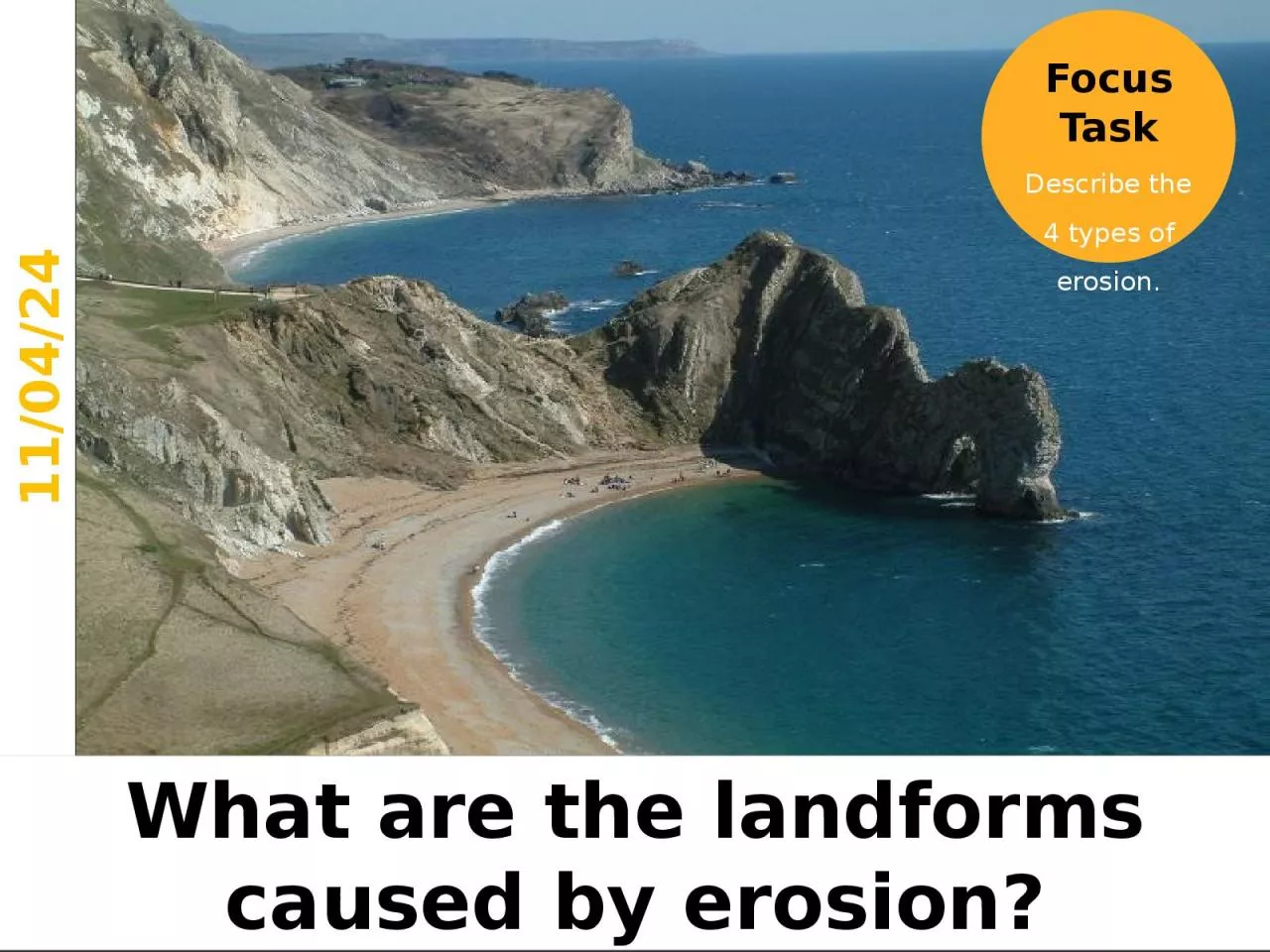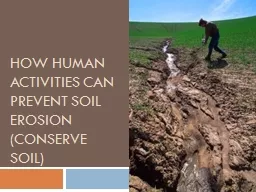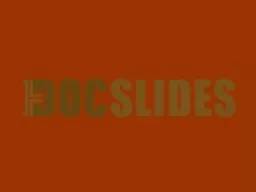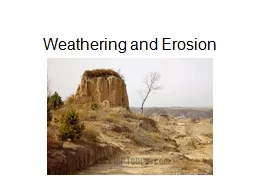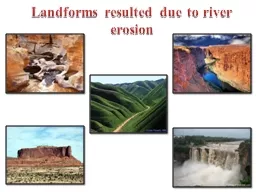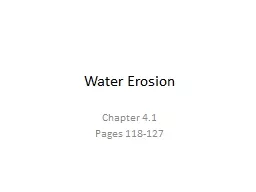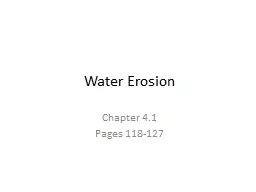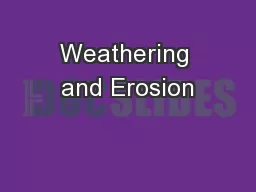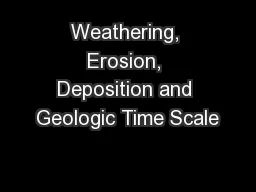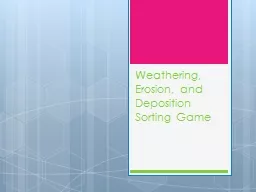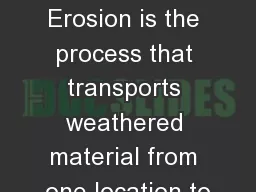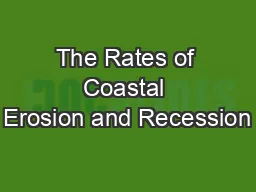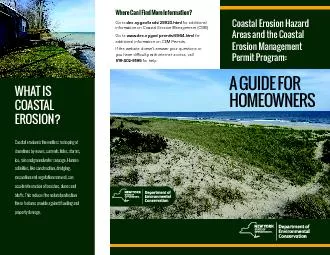PPT-Focus Task Describe the 4 types of erosion.
Author : DreamyDiva | Published Date : 2022-08-04
What are the landforms caused by erosion Friday 30 August 2019 What is a landform What do you think this means A landform is something that has been createdformed
Presentation Embed Code
Download Presentation
Download Presentation The PPT/PDF document "Focus Task Describe the 4 types of erosi..." is the property of its rightful owner. Permission is granted to download and print the materials on this website for personal, non-commercial use only, and to display it on your personal computer provided you do not modify the materials and that you retain all copyright notices contained in the materials. By downloading content from our website, you accept the terms of this agreement.
Focus Task Describe the 4 types of erosion.: Transcript
Download Rules Of Document
"Focus Task Describe the 4 types of erosion."The content belongs to its owner. You may download and print it for personal use, without modification, and keep all copyright notices. By downloading, you agree to these terms.
Related Documents

